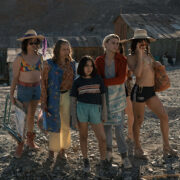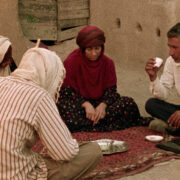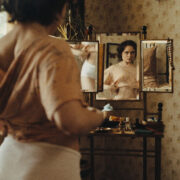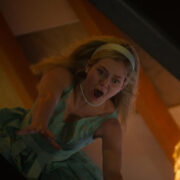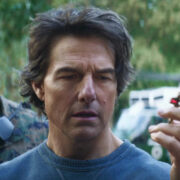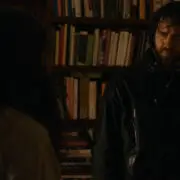The New Coronavirus Cinema Is Here
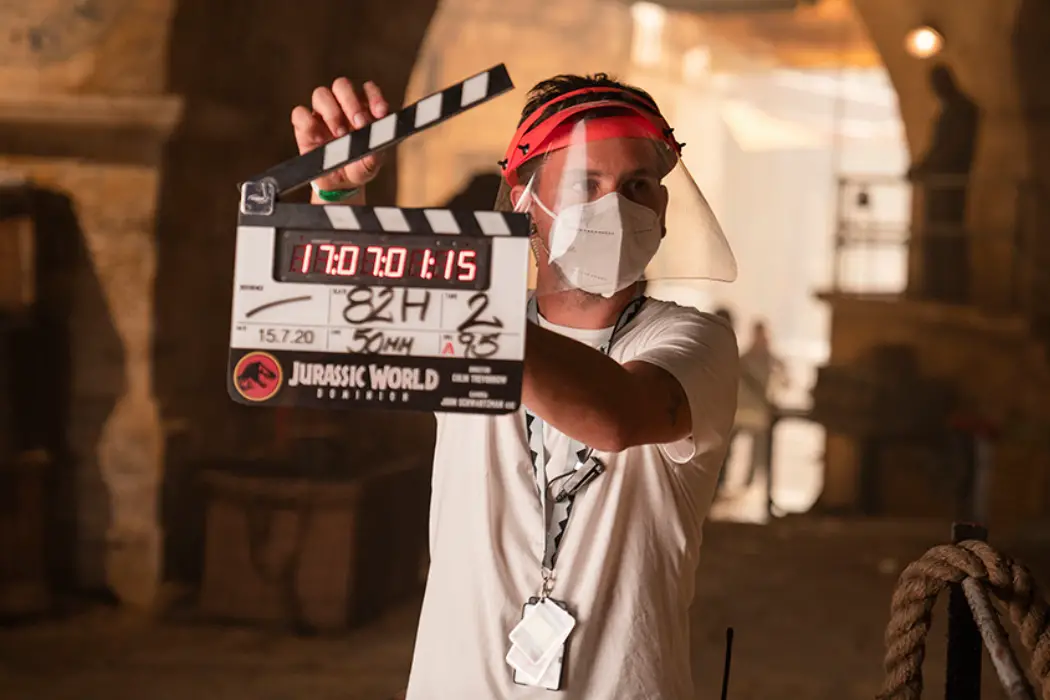
Film critic, Ithaca College and University of St Andrews graduate,…
Despite the global pandemic, people are still making films. We’ve all heard or read the doomsayers ringing their bells on street corners and asking, all dramatic and absurd, “Will cinema survive coronavirus?” Obviously, its survival, as a cornerstone of the global entertainment market, is guaranteed, albeit in a mutated form. These are, as everyone loves to remind us, unprecedented times, and observing amid the pandemic how the film industry is affected is one way of anticipating where we go from here.
With the mounting death toll, government incompetence, and collapsing economy, it might strike you as more than a little silly to worry about the fate of cinema. Like standing in a house fire worrying if the daisies out front are going to wilt. But cinema encompasses hundreds of thousands of jobs, from storyboard artists to VFX animators to theater employees, and their employment is now directly tied to the global film industry’s recovery. Though no tears will likely be shed over having to watch Godzilla vs. Kong on HBO Max as opposed to in cinemas, the shutdown resulting from the virus has shaken the foundations of the film industry and challenged, if not wholly upended, the ways that films are produced, distributed, and exhibited.
Exhibition Swings Toward Streaming
In terms of exhibition, virtual film festivals have become the norm. But virtual cinema programs, the main hope for many brick-and-mortar theaters struggling to attract audiences during the pandemic, have proved less successful than streaming platforms at attracting audiences. Home viewings, whether on streaming or via virtual cinema, have supplanted the traditional cinema experience, with many former moviegoers opting to stay inside and watch Mank or WW84 on their laptops rather than risk their health at the cinema.
Helping this phenomenon is a multitude of major streaming platforms, half of which — HBO Max, Disney+, Apple TV+ — only debuted in the last 15 months. Same-day VOD releases for multimillion-dollar tentpoles ensure that people won’t return to theaters until a vaccine is distributed.
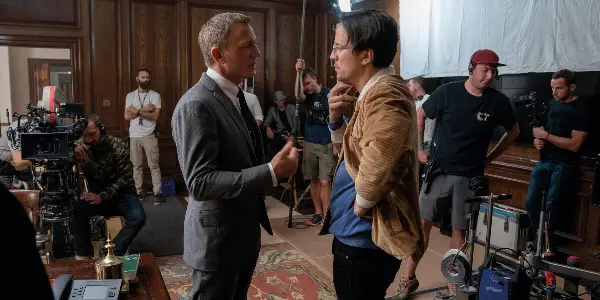
Meanwhile, most major theatrical features have been pushed back into oblivion. The James Bond film No Time to Die, a reliable bellwether for when cinemas will reopen, has been delayed six times. It is, at the time of writing, postponed to October, 18 months after the film was originally slated for release. Assuming cinemas reopen in October, that’d be 19 months of closed theaters or reduced capacity. Brick-and-mortar movie theaters are in a downward spiral, and streaming has become king.
As the exhibition is being upended, we are seeing the beginning of a new, COVID-reactionary cinema. Since the pandemic is still tearing through most of the world, these works are produced during and set in lockdown. Short documentary works like Mati Diop’s In My Room, the Cinetracts ’20 project, and HBO’s How To with John Wilson, and coronavirus docs like 76 Days, Totally Under Control, and Coronation all hope to tap into the zeitgeist. But COVID cinema has emerged from its chrysalis state now that HBO Max has debuted Doug Liman’s Locked Down, the first Hollywood film about coronavirus and lockdown to be set during the quarantine. The division between artistic ambition and revenue generation is already blurring with COVID cinema, and we’re beginning to see how auteurs and Hollywood studios alike are capturing the godawful times we live in, whether that be for truth, profit, or a happy blend of the two.
Production In A Pandemic
Nothing is easy to shoot in a pandemic, and Alex Gibney’s Totally Under Control, a newsreel documentary about the first six months of the pandemic in the U.S., offers a glimpse into this COVID world of moviemaking. In the film’s first five minutes, an interview subject opens his front door, bends down, and picks up the camera. We see him as though from the POV of an Amazon package. He marvels at the handles on the device, its convenience, and its ingenuity. A personal interviewee’s camera rig disinfected and delivered right to his doorstep.
Gibney teases the headaches that every filmmaker is experiencing right now: Every actor, subject, and crew member needs to be given a COVID safety bubble, and anything passing between bubbles must be rigorously disinfected. Some low-budget short films, documentary projects, and interview series have adopted this method, delivering professionally constructed, ready-to-go camera rigs to the homes of actors and subjects, sometimes paired with lighting and sound kits. Lighting can now be controlled remotely by cinematographers and lighting crews, thanks to LEDs with tie-in smartphone or tablet apps.
But what about the blockbusters? You can’t deliver an IMAX camera to someone’s front door, and Chris Pratt isn’t about to film in his backyard. Given the hurdles that face documentaries and indie films attempting socially distanced productions, it’s mind-boggling that tentpoles, with all their moving parts and mammoth numbers of crew members, have continued production regardless. Not all of those are safe, though. Many big movies, including The Batman, the new Mission: Impossible, Netflix’s Western The Harder They Fall, and the Olivia Wilde–Harry Styles picture Don’t Worry Darling, continued production, only to shut down due to cast or crew contracting the virus.
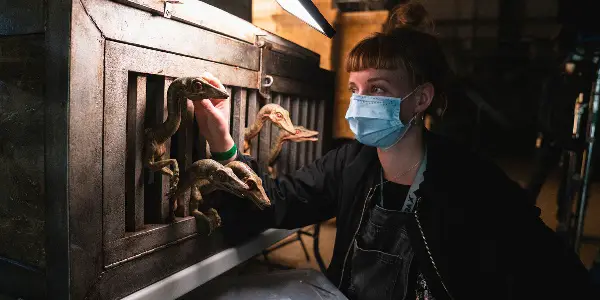
Jurassic World: Dominion is the largest film to have instituted tight COVID regulations and has managed to get on despite the virus, wrapping production November 2020. To make it happen, cast and crew needed to go through electronic temperature checks before arriving on set, and they had routine swab tests, safety briefings every day, and color-coded zones to keep them all distanced. It helped that, as with a major sports team, Universal Pictures rented out an entire hotel in England for the shoot. (COVID cases and deaths in the UK, meanwhile, have only increased astronomically.) It’s apropos that Jurassic World: Dominion, part of a franchise in which irresponsible visionary billionaires continue opening up parks full of people-eating carnivores that inevitably get loose and wreak havoc, pumped over $14 million into safety measures to spend several months wrapping up an already-expensive shoot so that Universal could have its big dinosaur movie in theaters in summer 2022.
Luckily, indie productions and small-scale works like Gibney’s are less demanding and less ethically dubious. According to Variety, the upcoming psychological horror We Need to Do Something finished its shoot in just 18 days with minimal crew. Another upcoming film, Rift, spent only five days on set and similarly allotted some of its budget for COVID testing and hotel rooms for the cast and crew. Filmmakers found a way to get by.
Host, the Zoom call ghost movie that came out last summer on Shudder, represents the Platonic ideal for a socially distanced film. Planning, production, and distribution took 12 weeks total, with director Rob Savage communicating with his cast and crew remotely. The seven principal actors did their own stunts and effects, with guidance from Savage and his team.
Do We Even Need COVID Films?
Before going any further, it’s important to consider that people don’t actually want to see any films about COVID-19. Many people, myself included, don’t want to watch the Grey’s Anatomy cast wrestle and cry their way through a coronavirus outbreak. We’re living it, after all. I can also imagine there’s a perversity in watching the new Grey’s Anatomy episodes if you’re a medical worker in real life, struggling to save COVID patients around the clock, only to return home and watch ABC spend millions of dollars to replicate your hellish working conditions on a soundstage with gorgeous actors who probably have great health insurance.
Director Doug Liman, whose utterly dreadful Locked Down I’ll get to in a minute, ran into this same problem when entering pre-production on his film: Do we even need fiction films about COVID right now? How soon is “too soon”?
In an interview with The Los Angeles Times, Liman described the immediacy of Locked Down’s setting, saying, “That’s like making a movie about the Vietnam War during the Vietnam War. And that’s what those of us who set out to make movies about the Iraq War were cautioned. We were told, ‘You’ve got to wait a generation before you can tell stories about it.’ And for the most part, the naysayers are correct [in that] audiences are not flocking to go see in their movies what they’re seeing in their evening news.”
Liman’s messily trying to simplify and draw connections to something that has no historical precedent. The war, for Americans and Brits, happened across the world, in a far-off place they’ve never been to, which they could only travel to on the evening news. With COVID, death is right here, in our communities, sometimes in our homes, and there’s an ever-present threat to going out in public, seeing your family, going to work. Liman isn’t trying to dramatize the news; he’s dramatizing what all our lives have been for the past year.
We’ve seen a surge of COVID projects in the last few months. This includes the Michael Bay-produced film Songbird (which is technically set in a dystopian COVID-riddled future and thus doesn’t qualify for the prereqs I’ve laid out here… also, it’s apparently dreadful). Others include the Canadian one-shot elevator thriller Corona, the Indian thriller Coronavirus, and the comedy-horror Corona Zombies, none of which I’ve seen and all of which are likely horrible. At Sundance 2021, three more pandemic projects were unveiled: Nanfu Wang’s documentary In the Same Breath, Iuli Gerbase’s romance The Pink Cloud, and Ben Wheatley’s In the Earth. There’s no cultural statute of limitations when it comes to a global pandemic. But the most protest we saw about these films, or Locked Down, or the new Grey’s Anatomy, is a brief “is it too soon?” in every review and a little hand-wringing from film journalists on Twitter.
Compare the response to the dramatizations of our current international tragedy to the discourse around 9/11 films. Major films were re-edited to remove scenes at the World Trade Center. Donnie Darko was completely buried upon its October 2001 release because of the scene in which a plane engine falls through Jake Gyllenhaal’s ceiling. For years, the only American film responses to 9/11 were austere documentaries, two Michael Moore joints, and one scene in Spike Lee’s 25th Hour. It took five years for the first major 9/11 films to be released when Paul Greengrass’s United 93 and Oliver Stone’s World Trade Center premiered several months apart. Now, in terms of the death toll, we have a 9/11 nearly every day in the U.S., let alone in the rest of the world, and it took Liman one year to conceive of, shoot, edit, and release Locked Down. It only took Bay and company 11 months to produce and release Songbird.
As opposed to 9/11 or even the Vietnam War, coronavirus is a phenomenon that can, for the most part, be understood rationally. There is a governing scientific order to the disease and its spread. COVID’s effect on our world is also a multifaceted, constantly evolving state of affairs, one for which no two individual experiences will be the same, nor are any two countries’ responses to it exactly alike, only governed by universal themes of dealing with lockdown, losing family, staying isolated from your loved ones, and losing touch with normalcy. A cinematic coronavirus response should illuminate corners of our societies that have had it worse than the white middle-class majority. Maybe how the disease has disproportionately affected minority populations, or how healthcare workers and other frontline employees struggled against COVID.
The First COVID Documentaries
76 Days, a documentary about the Wuhan Red Cross Hospital’s response to the outbreak, depicts Wuhan’s healthcare system and its frontline workers. Rarely do we see outside of the hospital or hear about Chinese authorities. Our focus is solely on the staff and patients.
Shots of desolate highways eerily echo 28 Days Later. The film paints a vibrant portrait of life in Wuhan, a place that in my mind had heretofore just been “ground zero.” The film, in depicting the hospital, its staff, and its patients, contradicts mostly everything the U.S. has been told about Wuhan and the country’s response to the virus — that China’s totalitarian state was prepared to deal with the outbreak, that lockdown for them was instant and all-encompassing, that they knew what they were doing. The film rebukes mythology, lionizes its medical staff, and challenges our hermetic understanding of coronavirus’s scope.
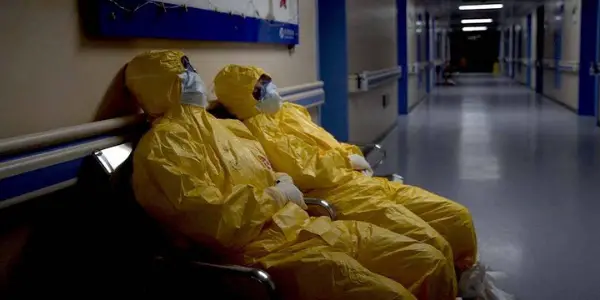
Coronation, Ai Weiwei’s doc about China’s COVID response, similarly frustrates American narratives about China. The film’s a mosaic of individuals — doctors, construction workers, mothers, and sons — living in Wuhan and dealing with COVID. The first 25 minutes follow two subjects, an activist filmmaker and a doctor. The filmmaker is driving through a snowstorm in the middle of the night to reach Wuhan, while the doctor disembarks a bus in the city and, in a stunning, minutes-long tracking shot, enters an ICU. Both journeys into the heart of darkness. The filmmaker is in this liminal, almost hellish space, the road a black, sooty expanse in front of him sending snow at his windshield like ash, while the doctor moves deeper into the bowels of this hospital, past Sharpie-marker graffiti on the walls of Chinese architecture, Spongebob and Patrick, dragons, and heroic doctors. There’s very little direct dialogue about the pandemic and no voiceover. It’s the opposite of Gibney’s Totally Under Control.
Weiwei shows us the human toll of the disease, both direct and indirect — a rift forms between a mother and a son because all she reads is state-sponsored misinformation; a homeless man cannot leave the city for months and has to live in a car park; a filmmaker risks his life to enter what’s become the most dangerous city in the world, all because of COVID. “Its shadow will darken our hearts forever,” one woman says. Neither film is particularly pretty, or palatable, but both are equally urgent and true.
Richard Drew, the photographer who captured the famous “The Falling Man” photo on 9/11, knows what it’s like for a work’s urgency and truth to overrule audience sensibilities. “Our readers e-mailed and phoned, and complained that they didn’t want to see this over their morning corn flakes,” he said. “This was a very important part of the story. It wasn’t just a building falling down, there were people involved in this. This is how it affected people’s lives at that time, and I think that is why it’s an important picture. I didn’t capture this person’s death. I captured part of his life. This is what he decided to do, and I think I preserved that.”
Hollywood’s First Lockdown Film
As far as fictional narratives about the pandemic, Host is as inventive as these are likely to come. The seven characters each have their own homes from which they’re Zooming into a socially distanced séance. The idée fixe of the Zoom call dictates the look of the film — it’s presented as though we’re an ominous eighth member of their call, in line with other “screen life” films such as Unfriended and Searching, and in lieu of traditional editing, the film takes place in real-time, flipping among the seven Zoom feeds. The audio lags and glitches, and frames are dropped appropriately. The friends accidentally unleash a malevolent entity in their homes, and the Zoom call format becomes more unsettling, a window you can’t close out of.
It checks all the boxes of a COVID film: Zoom calls, masks, discussions about current events and the pandemic, lots of booze, and a focus on naturalistic, disheveled mise-en-scène, evoking the burrowed-in, don’t-give-a-shit states we’ve been in for a year. Thematically, too, Host nails it. All COVID movies have to in some way get at that anxiety, frustration, and horror of everyday pandemic living and the allegory of a Zoom call demon might as well be the gold standard. The demon in the film is never named, just an invisible horror lurking in their homes, in their doorways, waiting for its moment to strike — the faceless threat, which everyone thinks they can outsmart until they can’t. Host is terrifying yet disturbing in its familiarity. It might be a microbudget indie ghost movie, but it’s perhaps one of the best examples of modern narrative filmmaking capturing the zeitgeist.
Compare that to Locked Down, one of the worst. This is Hollywood’s first star-studded lockdown film set in 2020 and 2021, from Liman and screenwriter Steven Knight. Since the film mostly takes place in one location and was shot in 18 days, it can afford a lower budget, somewhere between $3 and $10 million. But whereas the shooting limitations imposed on Host are that film’s entire reason for being, with Locked Down, it feels like a challenge: Can Liman and team pull off the film without contracting COVID? Most of the third act is set in a busy Harrods department store, where none of the extras wear masks. The film retains all the gloss of a Hollywood production, and I expect Liman and company spared no expense there. Aside from some Zoom calls, Locked Down has no distinguishing features in the image composition or camera placement to indicate it’s not an ordinary Hollywood drama. And certainly not in the mise-en-scène, which goes for “glamorous banker’s office” more than it does “bedraggled.”
Liman and Knight’s Locked Down has no reason to exist. It’s set in and was filmed during coronavirus lockdown in the UK. Chiwetel Ejiofor and Anne Hathaway star as a couple fraying at the edges because of COVID-19 and because they’re both insufferable, inevitably puttering toward jewel theft as a means to save their failed relationship.
It’s a rare instance of a high-profile cast and crew making a work so caught up in the present that lockdown hasn’t even lifted yet in the UK and the disease still claims thousands of lives a day in that country alone. Locked Down is halfway to being many things — a comedy, a romance, a drama, a heist — but it is certainly not “the film we need right now,” whatever the f*ck that amorphous phrase means. It’s overlong, too grandiose, and doesn’t feel at all like a coronavirus movie. The ostentatiousness of it all pisses me off. At a time when nobody is sure what “coronavirus cinema” should look like, I can tell you for sure that Locked Down isn’t it.
The film hardly deals with coronavirus anyway. There are a few throwaway lines about who has the disease and whether Hathaway’s character showed symptoms a few weeks ago. There are discussions about wearing masks. And sure, the proscenium of Locked Down is coronavirus-determined: Two former lovers have to quarantine together even though they can’t stand each other. But the film never interrogates that premise, it just throws around dialogue about hedgehogs and business meetings and fate versus free will and getting on the bike and riding as far as the road’ll take you.
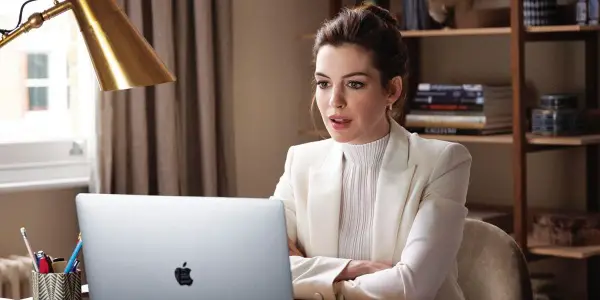
God, don’t show me wealthy people struggling during COVID. Hathaway plays a CEO selling diamonds to dictators, and Ejiofor, the everyman delivery driver character, lives in her luxurious London home. They have the kind of place you dream of when you’re a kid — fine art, a backyard, opium in the backyard. It’s disgustingly palatial, and it makes the film’s vibe, that it’s dealing with the hard truth of lockdown, feel utterly disingenuous. And that’s not even getting into how the leading Black character is the one with a shady criminal past.
Coronavirus took a year of our lives away from us, and it’ll have taken many more months before we’re all finally vaccinated. None of my friends have done anything, no big life choices, no massive achievements. Just life disappearing into a vacuum. We’ve been sitting around our homes trying to cope, applying to jobs we don’t get, maybe taking socially distanced strolls when it’s warm out. The last thing I want to do is watch a hot CEO and her boyfriend plan a diamond heist. And it’s only more unwatchable when Knight tacks on a running joke about Ejiofor’s character baking bread from scratch, even more insulting when that callback is how the film ends. Hathaway hid his flour from him, haha. They’re $2 million richer. One day, the rest of us will get our $1,400 relief checks.
Documentary Shorts For A Pandemic Year
No traditional narrative about coronavirus, not even a subversive fiction about coronavirus, would satisfy what we require from narrative cinema at this moment. Coronavirus cinema requires the obliteration of narrative. The disregard for linear time, endings, safety, and ultimately, the audience. That’s what pisses me off about Locked Down, is that it pretends like everything’s normal.
The Belgian critic Dirk Lauwaert wrote in 1970 that the “culture industry” of cinema, along with the rest of popular culture, “remains in the hands of an elite acting on the basis of alienation and estrangement.” He characterized all of cinema as a “culture industry” and said that all films traded in diverse ideologies as a fundamental function. Some films, though, like Locked Down and Totally Under Control, feel to me more like parts of a cultural-industrial complex than experimental short-form work. And that’s the kind of production that fascinates me during lockdown.
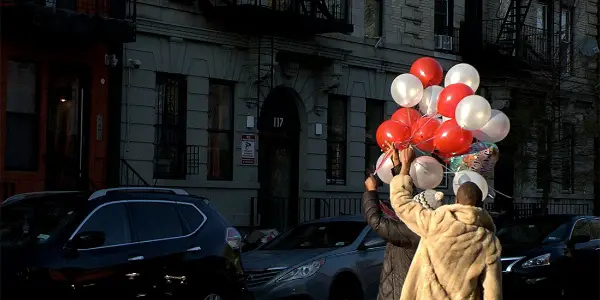
The short film is the only mode (besides, I suppose, pornography and vlogging) where one person with a camera and a minimal cast is the norm. I’m sure there are plenty of narrative shorts that intrepid filmmakers shot during lockdown, but the documentary shorts feel the most bare-bones and the most essential. One clear, singular perspective and vision.
The final episode of HBO’s How To with John Wilson is a great example of the short-form doc capturing our slide into total shutdown and the collapse of our global capitalistic systems. The series focuses on creator John Wilson’s anxieties and social awkwardness, and the episodes usually end with a big road trip, wacky people, and uncomfortable encounters, but with lockdown, he’s cut off, alone, with nowhere to go but back inside, to cook risotto on his own.
The Cinetracts ’20 project doesn’t just examine coronavirus. It’s a compendium of short non-fiction films from 20 filmmakers around the world, from Columbus to Cairo. The collection, which is free to watch online, echoes the Cinetracts project from 1968, when French filmmakers like Jean-Luc Godard and Chris Marker used cinema to respond to the May 1968 protests in Paris. Half of the 2020 project focuses on COVID, the other half on protesting, systemic racism, and civil unrest. Bouchra Khalili’s portrait of striking healthcare workers in Paris is followed by Sky Hopinka’s Wisconsin-set, rain-drenched mood piece, which watches a birdfeeder out the window while scrolling text tells us every historic event that happened on July 9.
The project wrestles with global crises in a way few films can, by offering a diverse array of voices and subjects. It reminds us of epidemics we’ve forgotten about — malaria in Africa, the exploitation of indigenous peoples in Australia, and the erasure of sub-Saharan African healthcare workers in Belgium.
Where Cinetracts ’20 expands, Mati Diop’s In My Room contracts. The short film captures Diop’s self-isolation, soundtracked by interviews with her grandmother Maji a few months before she died. “The recordings take place in the living room of her Parisian apartment, where she lived alone and confined for 20 years,” Diop says, as both an existential intimation and a reminder of the people in our lives who’ve been locked down for years already, whom we just never paid attention to.
Diop pulls up photos of her grandmother in Pages instead of editing them into the film, evoking the screen life techniques that Host and Cinetracts ’20 rely on. Film grain and splotches lend the short a threadbare roughness that juxtaposes the digital crisp inauthenticity of more mainstream, marketable films.
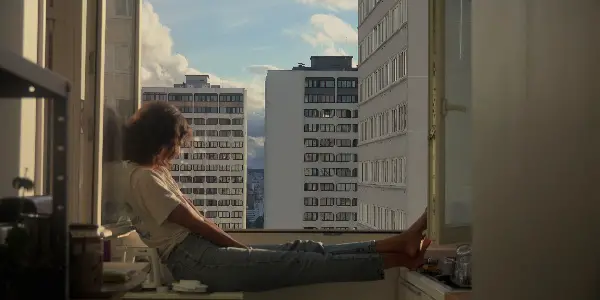
Confinement is the point of In My Room, not a workaround. The stripped-down production uses her ample window views of the city under quarantine, and showing us slivers of other people’s lives from her room, an almost split-set, Life Aquatic With Steve Zissou–reminiscent tableau, not unlike Alfred Hitchc*ck’s opening of Rear Window, a sequence watching the dozens of windows on an apartment building at night, then cutting among the inhabitants like a montage of bodies in cells, all locked in. Compare that to Locked Down, which never makes use of its window views and doesn’t even have its characters look out into the street unless Chiwetel Ejiofor is there reading poetry.
In My Room’s small moments bear tremendous weight. Diop scrounging around in her minifridge, covered in a deep purple light. Performing La Traviata beside her open window at night. Sitting in bed in pajamas with coffee and a meal. The film’s most dramatic scene is an irrational, furious argument between her and her grandmother, which plays against a setting sun. No inventive editing or camera angles, like the filmmaker can’t even bear to dream up other images for the scene, or like she doesn’t want to revisit it and wants us to just make do with the sunset. The sense that In My Room is only half-finished, a parasitical work-in-progress that clung to Diop’s chest until she shoved it loose, is one of the film’s most absorbing qualities, and one that evokes coronavirus dread and lockdown anxiety more than all the dialogue about mask-wearing and bread-baking in Locked Down can.
Conclusion: Cinema Versus The Pandemic
Coronavirus’ intractable impact on every facet of our life will never go away. “Its shadow will darken our hearts forever.” Is it selfish to want our coronavirus cinema to replicate that feeling? To acknowledge the dark skies and apocalyptically empty streets, and the pulsing hum of the quiet?
Fuck Locked Down. We don’t need coronavirus stories with rich white heroes. Or stories that don’t challenge structures of power, oppression, and disinformation. Or frankly, stories with happy endings. Stories with no endings at all would be preferable.
Our cultural industry of film always supersedes the art of film. It chokes the life out of innovative storytelling and experimentation and prioritizes white male voices above the rest of the art world. Hopefully, now that COVID has halted the usual cycles of production, distribution, and exhibition as we’ve known them, our new coronavirus cinema as well as our post-coronavirus cinema can be more open, inclusive, and challenging, less spectacle and more existential, less nationalistic and more globalized. Art that’s immediate rather than five years in the past.
Documentaries might be broadening our understanding of the disease and its effects, but to me, short-form documentary cinema is the only mode of filmmaking that’s capturing COVID properly. It’s getting the fear, the stress, and the way that time just erodes. Life feels cavernous and open these days, like I can feel the wind whistling through the body, like there are these big unfillable spaces inside us. Abstract art, like Diop’s film and the Cinetracts project, helps me to feel like other people feel like that too. They eschew conventional narratives, editing, sound mixing, and voiceover, all to communicate the unprecedented magnitude of this. We’re all living in scar tissue now. Our art needs to reflect that.
What has your favorite coronavirus film, short, or series been so far? Or do you think it’s “too soon” for any of that? Comment below and let us know.
Does content like this matter to you?
Become a Member and support film journalism. Unlock access to all of Film Inquiry`s great articles. Join a community of like-minded readers who are passionate about cinema - get access to our private members Network, give back to independent filmmakers, and more.
Film critic, Ithaca College and University of St Andrews graduate, head of the "Paddington 2" fan club.






